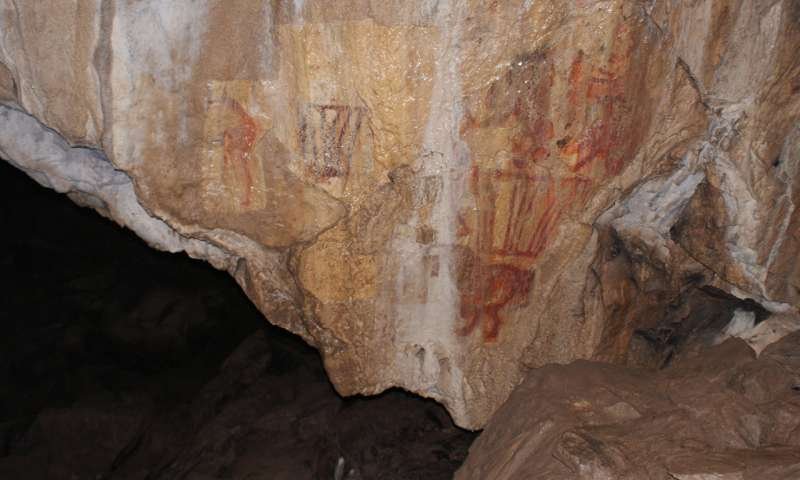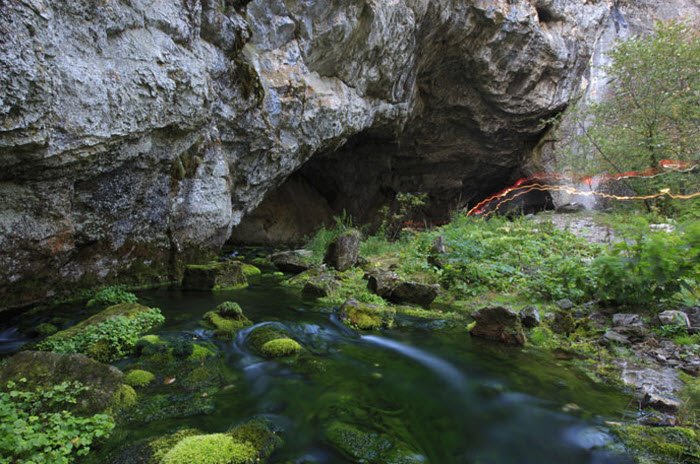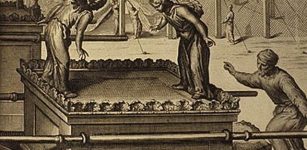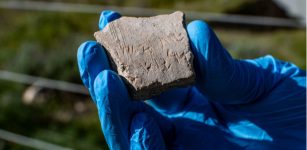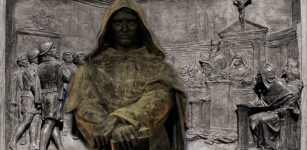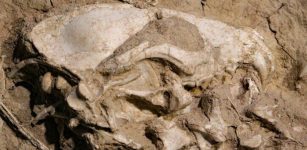Astonishing Upper Paleolithic Camel Cave Painting Discovered In The Ural Mountains
AncientPages.com - There were no camels in the Ural Mountains during the Upper Paleolithic era and yet, scientists have discovered a cave painting of the animal in the Kapova cave that is located in Southern Urals.
Painted in red ochre and partially outlined with charcoal, the image is preliminary estimated to be between 14,500 and 37,700 years.
How is it possible our ancestors depicted a two-humped camel is these animals were not present in the region?
One possibility is, as scientists suspect that artists in the Upper Paleolithic could migrate over long distances.
Credit: Vladislav Zhitenev/Lomonosov Moscow State University
Upper Paleolithic Artists In The Ural Mountains
"This painting, cleared on the polychrome panel "Horses and Signs," which has been well-known since the late 1970s, has no analogues in the art complexes of the caves of France and Spain, but does have some resemblance to the camel painting from the Ignatievskaya cave.
Now it will probably become a significant image in the Upper Paleolithic cave bestiary of the Southern Urals," says V.S. Zhitenev, head of Moscow State University's South Ural archaeological expedition and leading researcher for the Kapova and Ignatievskaya caves.
"The age of the drawings in this panel cannot be accurately established yet, but the results of uranium-thorium dating of the calcite deposits on which the image is painted, and which cover it, unambiguously show that the time period during which the drawing was made was during the Upper Paleolithic age, which is no earlier than 37,700 years ago and no later than 14,500 years ago.
Ural Mountains - Image credit: Any Latitude
In the course of excavating the Kapova cave, only the upper layer of deposits with traces of activity of Paleolithic artists, about 17,000 to 19,000 years ago, has been dated so far," concluded the scientist.
"It is very significant that this camel vividly confirms the theory of the Volga-Caspian direction of the connections among the people who created the sanctuary in the Kapova cave. This direction was earlier grounded in the use of ornaments from fossil shells brought from the Caspian region. Moreover, this direction is very interesting in terms of a possible way that the traditions of creating cave sanctuaries with wall paintings could have been spread, if we consider the Carpathian caves with Ice Age wall paintings," explains Vladislav Zhitenev.
See also:
Striking Ancient Stone Idols: The Forgotten Polovtsian Statues Of Eastern Europe
Ancient Unsolved Mysteries Of Siberia – A Place Full Of Secrets
Balbals – Ancient Stone Guards Of The Kazakh Steppe
"Equally important, along with the discovery of the camel painting, is the fact that fragments of the shape of another animal, apparently a mammoth, were cleaned off. This is the first well-preserved painting of a woolly giant from the Ice Age on the middle level of the cave.
Cleaning calcite off from the newly-discovered figures confirmed the theory of a significant similarity in the general structure of the visual panels, with leading images of horses, and large geometric shapes, in which one may see representations of animals. The similarity in the arrangement of vertical and horizontal figures (or rather, explicit compositions) on panels located on two different floors indicates a profound connection between the ideas expressed by the Paleolithic artists. The upper and middle levels are connected by a thirteen meter high vertical well," V.S. Zhitenev points out.
The Kapova Cave Contains Remarkable Ancient Paintings
The Kapova Cave - Image credit: Xtremesports
The Kapova cave is located in Bashkiria, 400 km away from Ufa, on the territory of Shulgan-Tash nature reserve. The cave is one of the most famous sites containing Paleolithic parietal art in Europe. Among the images depicted, one can come across such vivid representatives of mammoth fauna as wooly rhino, bison, horse, and, of course, the wooly mammoth itself. The wall paintings were created about 17 000 - 19 000 years ago. Figures of fish and a zooanthropomorhic figure (a mixomorph combining human and animal traits), rarely seen in European sites, are of special interest.
The principal array of images in the Kapova cave are unidentifiable spots of red pigment, which are partially blurred shapes, partly the remains of erased drawings, and partially traces of Paleolithic artistic activities of unknown origin.
AncientPages.com
Expand for references
